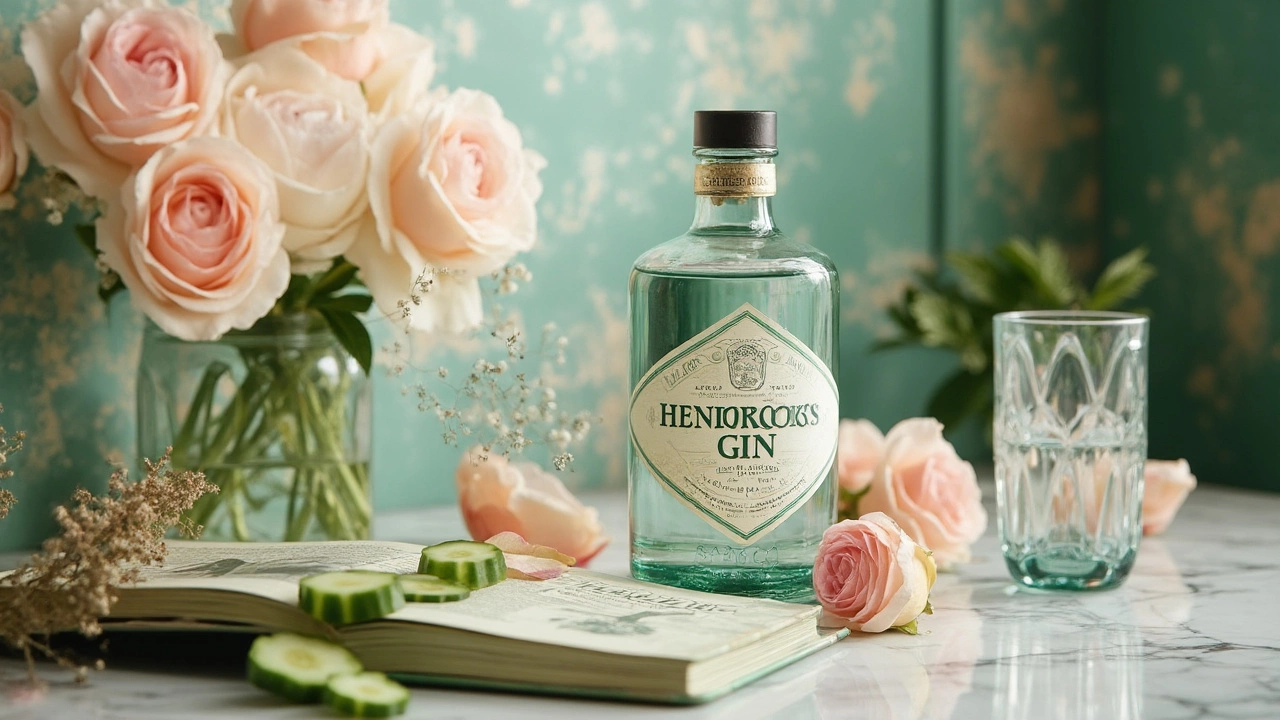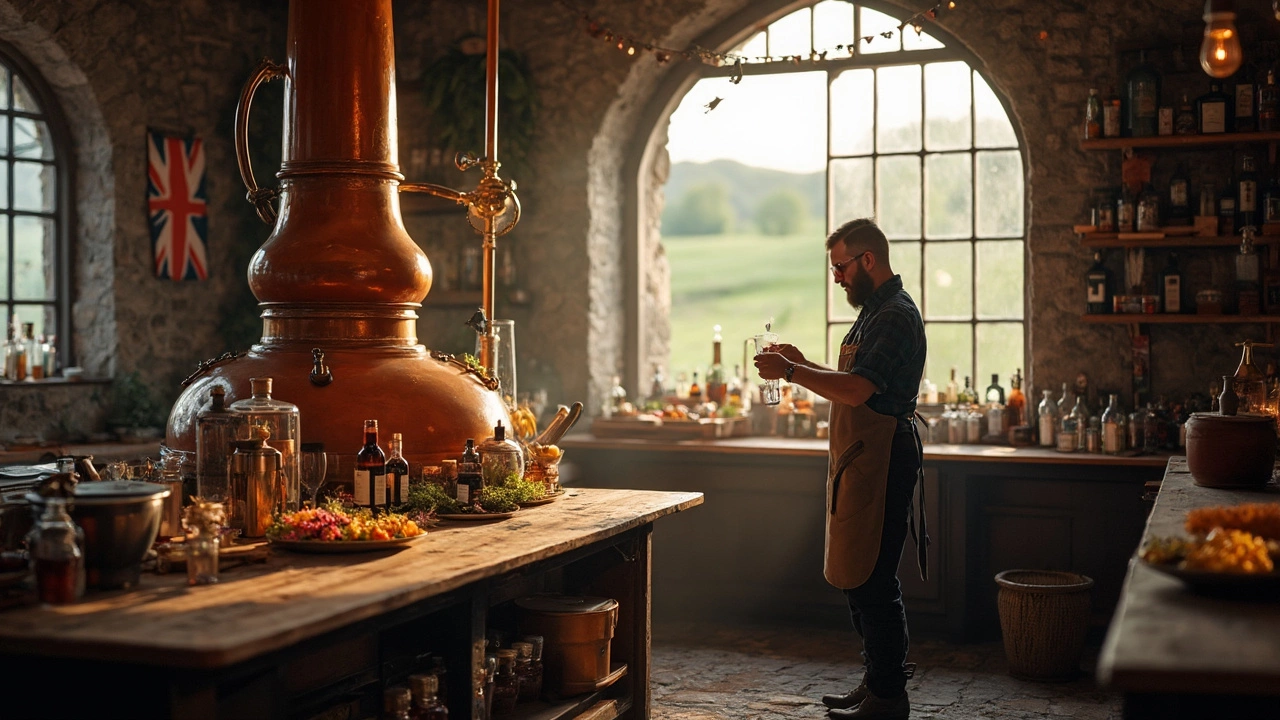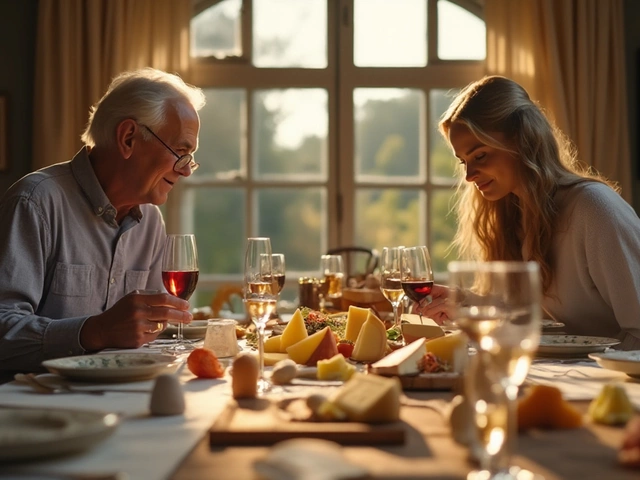So you checked out the price on a bottle of Hendrick's Gin and maybe your wallet started sweating. Why does it cost double—or more—compared to that big green bottle down the shelf? The answer isn't just fancy branding or a clever ad campaign. There’s real stuff going on behind that price tag.
Let’s get real: Hendrick’s uses a totally different method to make its gin. It doesn’t just throw some juniper in and call it a day. Instead, they’re mixing weird old-school stills, layering flavors with flowers and roots, even tossing in rose petals and cucumber. All these quirks aren’t just for show—they take longer, demand more skill, and definitely cost more to pull off right.
But the money isn’t just going to the process. Those tours you keep hearing about—the ones people actually travel for? They’re one-of-a-kind. Walking the distillery in Scotland, seeing those quirky copper stills, even smelling those weird botanicals up close, you start to get where that extra cash goes. There are a few tricks to getting the most out of the tour, and maybe even scoring a taste or two you won’t find anywhere else. More on that coming up.
- Not Your Average Gin: Unique Production Tricks
- Botanicals That Break the Bank
- Small Batches, Big Price
- The Distillery Tour Experience
- Is It Worth the Money? Practical Tips
Not Your Average Gin: Unique Production Tricks
Most gins out there follow a basic template: start with neutral spirit, throw in some juniper and a bunch of other stuff, distill, and bottle. Hendrick's Gin skips the shortcut method. Their process is more of a science experiment, mixing old and new gear to squeeze out distinct flavors you don’t taste in regular brands.
The wild part? Hendrick’s uses two totally different stills: the Carter-Head and the Bennett. Both are vintage models—one’s from the 1860s, the other’s even older. Instead of blending everything at once, they distill half the botanicals in the Bennett still for heavy, oily flavors. The Carter-Head, on the other hand, works almost like a steam bath, pulling out lighter, fresher notes from the other botanicals. When both batches are ready, they mix them for balance. It’s not just about being quirky; this two-still process actually makes the gin softer and more layered, which gin fans rave about.
That stills trick isn’t where it stops. Hendrick’s adds rose petals and cucumber to the mix, which they don’t just throw in at random. These go in after distillation—not a common move at all. This stage is what gives Hendrick’s that noticeable fresh and floral taste you probably can’t find in cheaper gin. That extra step means more cost, more labor, and way more attention to detail.
Another thing you probably didn’t hear: each batch is small. Usually, only 500 liters at a time. That’s just a drop in the gin world. Most big brands go for thousands of liters. Small scale? It’s expensive, but it lets Hendrick’s keep an eye on every batch so nothing gets messed up.
Here’s a breakdown to show how Hendrick's Gin stacks up against average gin brands:
| Feature | Hendrick's Gin | Average Gin |
|---|---|---|
| Stills Used | Two (Carter-Head & Bennett) | Usually one type |
| Batch Size | 500 liters | 1000+ liters |
| Botanical Infusion | Post-distillation (Rose & Cucumber) | Mainly during distillation |
What does all this mean for you? Expect a gin that’s engineered for flavor, handled like a craft beer, and built for sipping—not just for mixed drinks. That’s a big chunk of why Hendrick's Gin isn’t ever the cheap bottle on the shelf.
Botanicals That Break the Bank
Ever flipped over a Hendrick's Gin bottle and checked the ingredients? The list is longer and a lot stranger than most gins. Sure, there’s the basics—juniper, coriander, angelica root. But Hendrick’s is all about the extras. We’re talking rose petals from Bulgaria and fresh English cucumbers. Neither of those comes cheap, especially when you’re picky about freshness and origin.
Hendrick’s puts a big focus on using rare or seasonal plants, so they’re not buying cheap, dried botanicals by the ton. They actually use a blend of 11 botanicals, including elderflower, chamomile, caraway, and orris root. Sourcing these isn’t just about checking boxes. If they can’t get the good stuff, they wait until they can. That adds to the cost, not to mention the headache for production!
Fun fact: they actually infuse those famous Bulgarian rose petals and cucumbers after distillation, making the flavors noticeable but also driving up price since the process isn’t standard for most gins. These ingredients must be shipped fresh, sometimes across continents, and handled carefully so they don’t lose their punch.
Check out this side-by-side of common gin vs premium gin botanicals:
| Ingredient | Common Gin | Hendrick's Gin |
|---|---|---|
| Juniper | ✔️ | ✔️ |
| Coriander | ✔️ | ✔️ |
| Angelica Root | ✔️ | ✔️ |
| Cucumber | ❌ | ✔️ (English, fresh) |
| Rose Petals | ❌ | ✔️ (Bulgarian, fresh) |
| Chamomile | ❌ | ✔️ |
So next time you hear someone say all gin tastes the same, you can hit them with the facts. The specific ingredients in Hendrick's Gin not only make it taste way different, but cost a whole lot more to source and work with. That’s a big part of the reason it costs extra at the store—and on those fancy gin distillery tours.

Small Batches, Big Price
If you’ve ever wondered why a bottle of Hendrick's Gin can run you well over $40, look at how it’s made. Hendrick’s doesn’t churn out gin by the trainload. Instead, it sticks to small batch production, and that’s where the costs start adding up.
Each batch of Hendrick’s is crafted in quantities of just 500 liters at a time. Compare that to big name brands pumping out thousands of liters per run. Smaller batches let Hendrick’s keep a closer eye on quality, but it also means higher costs per bottle. Nobody’s cutting corners, and every liter gets way more personal attention.
"By working in small batches, we’re able to capture the subtle flavors that make Hendrick’s unique, but it takes more time and skill." — Lesley Gracie, Hendrick’s Master Distiller
Here’s what makes small-batch distilling pricier but worth it:
- There’s less room for mistakes. If a batch goes wrong, that’s a big loss.
- Attention to detail goes way up—taste-testing is constant, not just at the end.
- Process is hands-on: workers actually monitor and adjust each batch, instead of relying on machines to spit out thousands of bottles.
It’s not just about what’s in the bottle, either. Keeping production small means Hendrick’s can keep experimenting, spitballing new recipes (like their Lunar or Orbium versions), and never losing control over what goes in their signature gin. That’s something you won’t get from the massive brands.
| Brand | Batch Size | Average Price (USD) |
|---|---|---|
| Hendrick's Gin | 500 liters | $40-50 |
| Large-Scale Gin Brand | 5000+ liters | $20-25 |
This small-batch approach isn’t just marketing spin. It delivers a more controlled, higher quality product, but yeah, it comes with a price. If you’re on a gin distillery tour and see the compact stills at Hendrick’s, you’ll see why they can’t just flood the market. They’re playing the long game for flavor, not cheap volume.
The Distillery Tour Experience
If you’re thinking about visiting the home of Hendrick's Gin, you’re in for way more than a snooze-worthy walk past some stills. Hidden in a quiet Scottish town called Girvan, the Hendrick’s Gin Palace is nothing like the usual liquor factory tour. They lean hard into their weird and wonderful image, and honestly, it works. Tours aren’t just for show—they’re an important part of Hendrick’s brand and add to what you’re paying for when you buy a bottle.
The tour itself is super hands-on. You’ll step right into their Victorian-inspired glasshouses, packed with exotic plants and even the odd cucumber vine or rose bush—the key botanicals in their gin. You actually get to nose and sometimes taste botanicals before they hit the still. Unlike bigger operations, it’s all tucked away in smaller batches that show how much care and labor really goes into each run.
Here’s what makes a trip different from the usual distillery visit:
- You see both the Carter-Head still and traditional pot still at work. Hendrick’s is one of the very few using both at once, which is a big deal in the gin distillery tours world.
- Expert guides explain the weird process in simple terms—none of that dizzying science talk.
- You won’t just get the “standard” gin at a tasting. Sometimes there are Palace-only exclusives: experimental batches, special editions, or new recipes that aren’t sold anywhere else.
- The greenhouse, with its hot jungle air, makes you appreciate the rare botanicals they use. This is basically where their biggest bills come from.
Getting a spot on the tour isn’t a walk-in deal. Booking ahead is a must—usually months in advance, especially peak season. If you’re heading to Scotland mainly for spirits, Hendrick’s is worth putting at the top of your list, but plan for extra travel time since Girvan is a bit off the main tourist routes.
For anyone curious about what sets premium gin apart, taking the tour helps you see—and taste—why Hendrick’s isn’t like mass-market stuff. Those extra expenses from real botanicals, traditional distilling, and a one-off tour experience all fold straight into what you see on that price tag. It’s not only about the gin; you’re paying for craft, story, and a one-of-a-kind visit most gin brands just can’t match.

Is It Worth the Money? Practical Tips
Here’s where you answer the big question: is Hendrick’s really worth the splurge, or is it just hype? The truth is, you’re not just paying for booze when you shell out for a bottle of Hendrick's Gin. You’re getting a flavor you literally can’t copy at home—no matter how many cucumbers you shove in a bottle. Every batch is made in tiny quantities, using two types of rare stills (the Carter Head and Bennett), which pretty much no other gin maker combines. That quirky method gives Hendrick’s its signature smooth finish and those weirdly cool hints of rose and cucumber.
If you’re thinking about a gin distillery tour, Hendrick’s is one to put near the top of your list. The distillery isn’t just a production plant, it’s a bit like stepping onto a movie set made for gin geeks. You’ll see and smell the exact botanicals they use—there are 11 in total, sourced from all over the planet, and most distillers just don’t bother with half of them. The crew running the tour aren’t bored guides, either; they’re actual production staff who know the innards of the process and will answer every nagging question you’ve got. So, you aren’t just paying for a drink—you’re getting real access and knowledge.
Is it going to empty your wallet? Check out what you actually get with that price:
| What Your Money Buys | Typical Gin | Hendrick's Gin |
|---|---|---|
| Botanicals Used | 5-7, mostly local | 11, globally sourced |
| Distillation Method | One type of still | Two rare stills, blended |
| Batch Size | Large, industrial | Small, craft-sized |
| Distinctive Flavors | Standard, mostly juniper | Rose, cucumber, layered flavors |
| Distillery Experience | Basic or none | Immersive, hands-on |
Quick tips to really make your money count:
- Go for the gin distillery tour—book in advance, spots fill fast, especially around weekends.
- Try Hendrick’s in a simple gin and tonic with fresh cucumber (skip the lime). That’s how it shines best.
- Look for special releases. They sometimes offer limited-edition gins at the distillery that never hit regular shelves—these are true collector’s items and sometimes surprisingly affordable.
- If you’re visiting, ask if there’s a tasting flight. It’s usually better value than just buying cocktails at a local bar.
So, is it worth it? If you’re a fan of trying new things, love craft spirits, or just want to see what all the fuss is about with premium gin, Hendrick’s delivers something you simply won’t get from a standard bottle. If you’re just using gin in a massive cocktail mix, maybe save your cash for something else. But when you want to taste real artistry in a glass—or you’re on the hunt for a cool gift—all the reasons for that higher price suddenly make a lot of sense.


